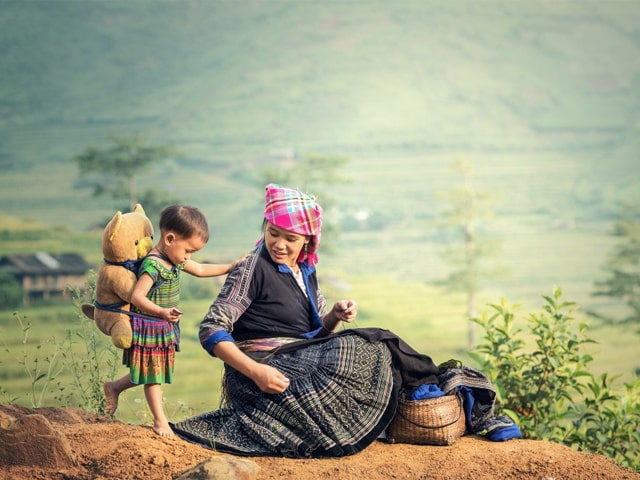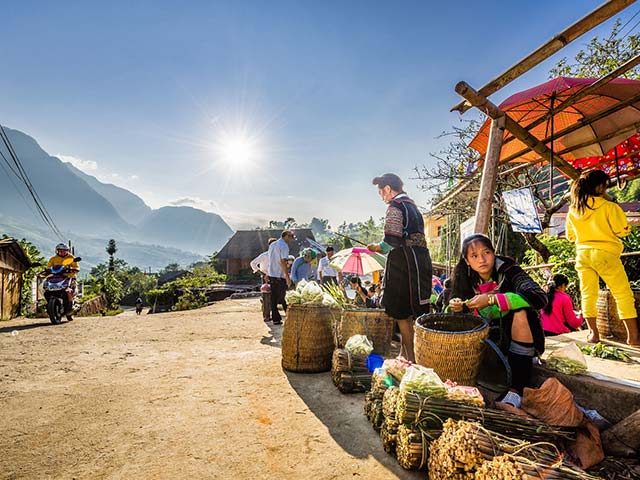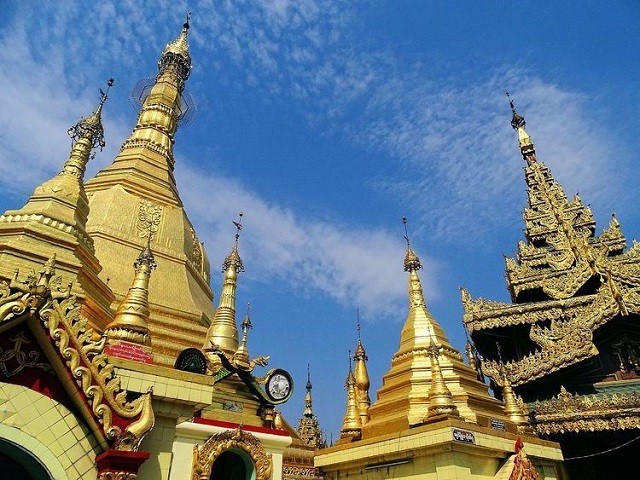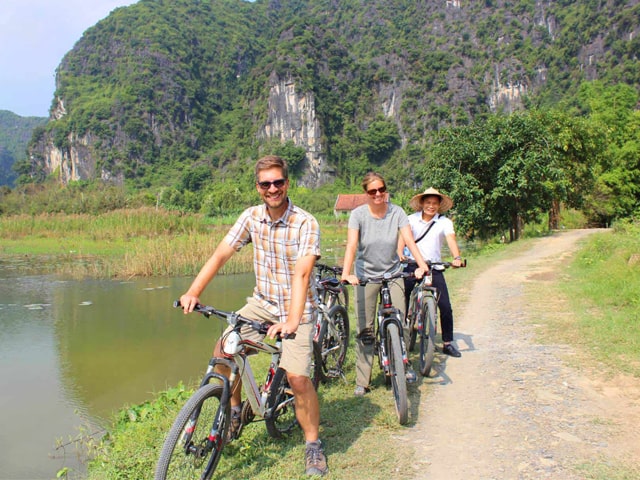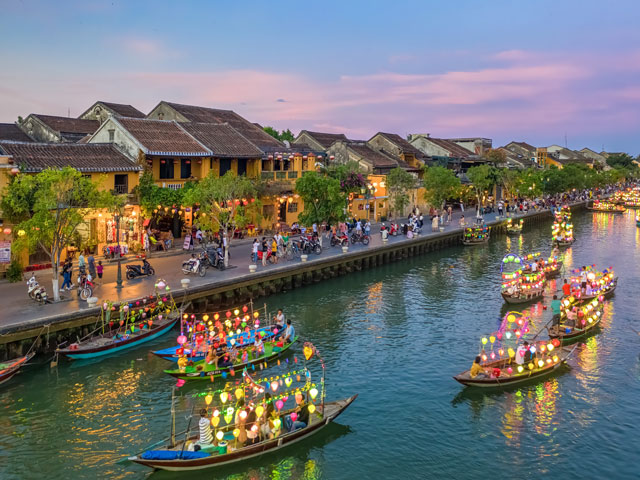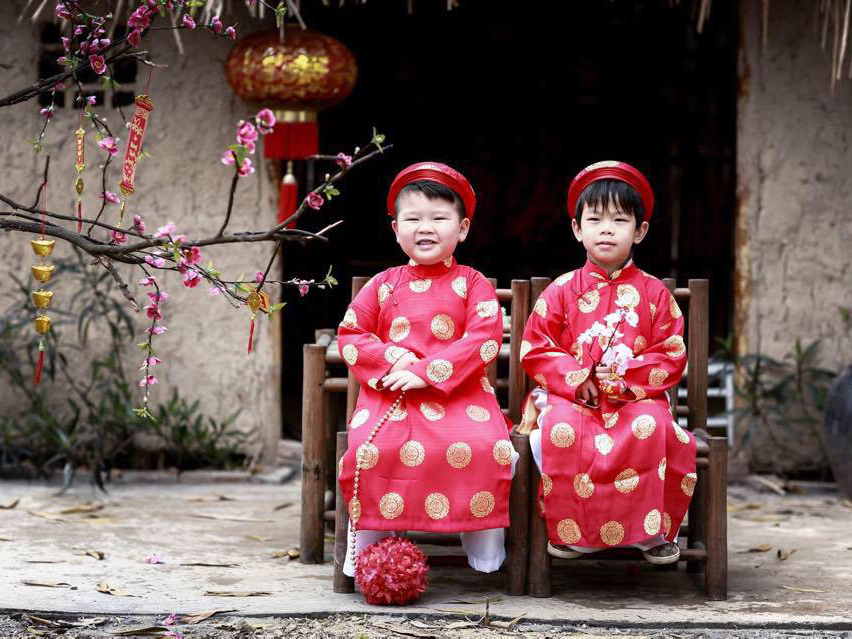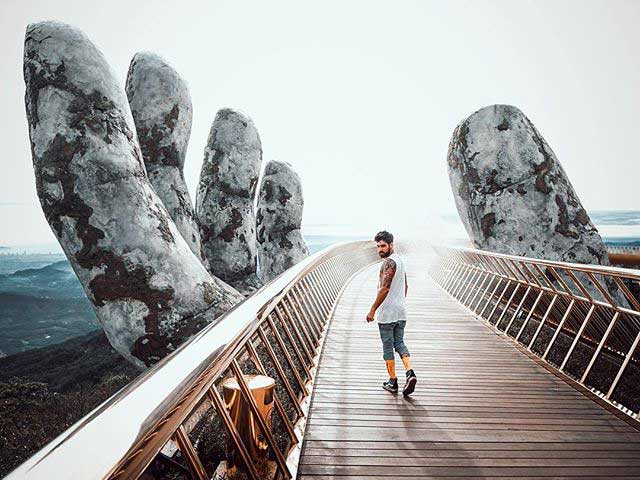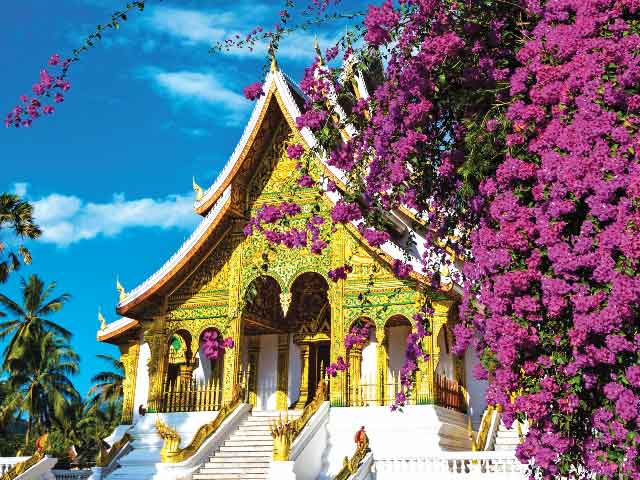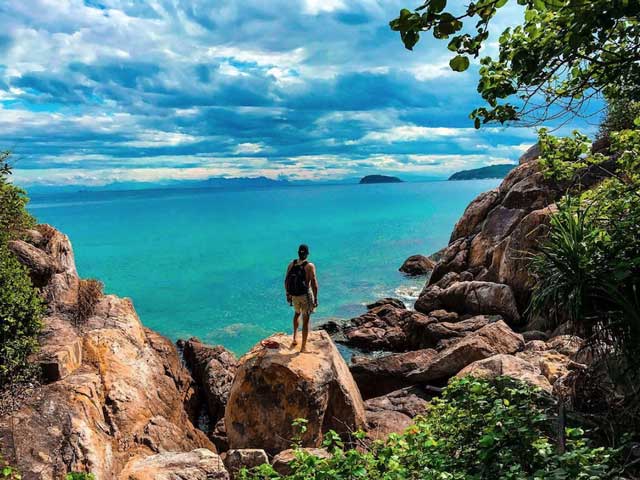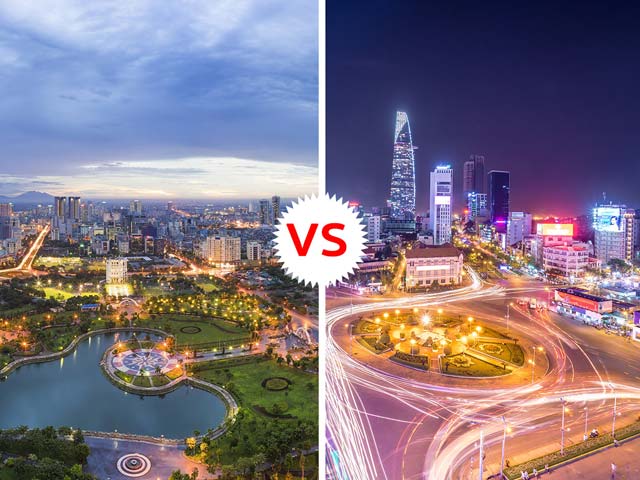Dong Van - Latest Travel Guide
Posted By : Threeland Travel / Ha Giang -Travel Tips
A district called Dong Van includes the cities of Dong Van and Pho Bang as well as 17 communes. Hanoi is around 320 kilometers distant. For travelers traveling to Ha Giang City, this northernmost region of Vietnam—which shares a 52.5-kilometer border with China—often acts as a layover. Here, the best of the local culture and the surrounding landscape converge. With rugged mountains carving out vast valleys and an average elevation of 1,500 meters above sea level, Dong Van has a diverse topography.
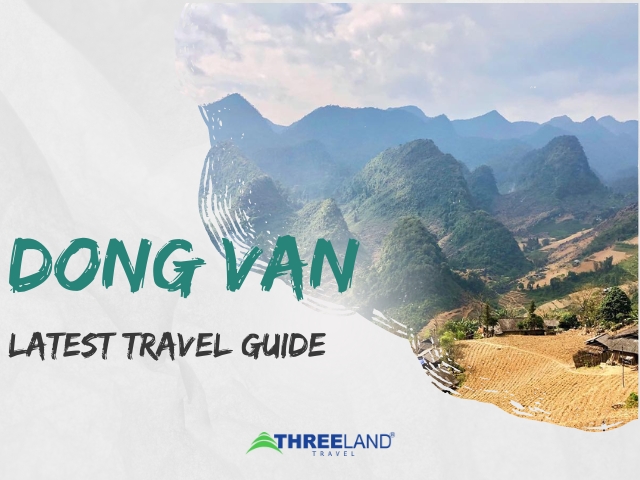
What season is beautiful in Dong Van?
Dong Van is surrounded by a monsoon environment with features of the continent. 1,750 to 2,000 millimeters of rain fall on average every year in the area, mostly between the months of May and October. November through April are considered the dry months.
The average annual temperature is roughly 20 degrees Celsius, with occasional lows of 1-2 degrees Celsius during the coldest months and a maximum of around 40 degrees Celsius. Around 84% of the air is saturated with humidity. Even frost and the sporadic arrival of snow are possible during the winter.
The Dong Van Plateau is breathtaking all year long, with each season having its own allure. Here is a list of the ideal travel times:
Enjoy the peach, plum, and yellow brassica napus blooms that swing in the mist from January through February.
- From March through April, observe the brilliant blooms of the highland red bombax ceiba.
- From April through May, see rice fields with terraces and running water.
- View lush golden rice fields from September through October.
- From October to December, take in the buckwheat blossoms' bloom.
Transportation
Highway 4C connects Dong Van, which is located 150 kilometers north of Ha Giang City. Motorcycles, automobiles, and buses are just a few of the alternatives available to travelers. Depending on the form of transportation you choose, the trip typically lasts 3 to 5 hours.
Motorbike rentals cost about VND100,000 ($4) per day in Dong Van town for tourists.
Where to stay?
Visitors may find a variety of lodging options in Dong Van, including guesthouses, homestays, and bigger hotels. Homestay Hagiang Holic, Plum Homestay, and other homestays may be found all across the town and surrounding communes. Homestays cost between VND100,000 and VND250,000 for a mattress in a dorm or stilt house, or between VND400,000 and VND1 million ($16.70 and $42) a room.
The average cost of a room at establishments like Hoa Cuong Hotel, Hoang Van, Hoang Ngoc, and Ma Pi Leng Hotel is VND400,000 to VND 1 million per night.
What to do in Dong Van?
Dong Van Old Town
Dong Van Old Town is a must-see attraction and is situated in the center of the Dong Van Karst Plateau Global Geopark. More than a century ago, a wild valley gave way to this community. Dong Van Old Town appears like a U-shaped grouping of dwellings with yin and yang tiled roofs when seen from above. This comprises dwellings and small enterprises, all of which exhibit traits that speak to the nature of the rocky plateau.

Don't pass up the chance to enjoy Pho Co Cafe at the intersection of Dong Van central market. It is housed in a mountain-leaning, century-old building.
Tham Ma Slope
Tham Ma Slope, which is close to the districts of Yen Minh and Dong Van, is a rough section of National Highway 4C. With 9 twisting twists over 5 kilometers, this route is known for being one of the most dangerous in the North. Visits promise stunning vistas and the opportunity to become immersed in local lore.

Vuong Mansion
Early 20th-century architecture from China's Qing Dynasty was imitated in the construction of the Vuong Mansion in Sa Phin Commune. The 1,120 square meter residence was built over the course of 8 years.
With tall agarwood trees all around it, the home resembles a turtle shell. Two stone walls with battements and guardhouses are present.
The main house faces the entrance, while two outbuildings run parallel and perpendicular to it. The palace is made up of three stilts dwellings. From the columns to the roofs, all three structures are made from priceless wood.
13 kilometers from the heart of Dong Van Town, Vuong Mansion is located close to Highway 4C on the road from Ha Giang City to Dong Van. The Ministry of Culture, Sports, and Tourism designated Vuong Mansion as a national architectural and artistic treasure in 1993.

Nho Que River
The Nho Que River rises in Yunnan Province, China, runs through the Ha Giang Province districts of Dong Van and Meo Vac, and merges with the Gam River in Cao Bang Province. The river travels 46 kilometers across Vietnam, passing through the Lung Cu Commune and the Tu San Canyon before continuing on after the Ma Pi Leng Pass.
The majority of the year, the river's water is turquoise.
Visitors may rent boats from local tour operators for VND50,000 to VND150,000 ($2.10 to $6.25) each boat, depending on the model, for boat trips and kayaking.

Visitors must travel via a zigzag route in order to get to the wharf. To guarantee a secure voyage, it is advised to employ a local guide who is familiar with the route.
Flag Tower Lung Cu
At 1,470 meters above sea level in Lung Cu Commune, the Lung Cu Flag Tower is located atop Lung Cu Peak. It is 24 kilometers from Dong Van Town and about 3.3 kilometers from the northernmost tip in Vietnam.
The flagpole has undergone several restorations and improvements during its lengthy existence. It was opened on September 25, 2010, and it now has an octagonal design and is over 30 meters tall. The Vietnamese national flag is flown over a 54-meter square area from the top of a flagpole that is 9 meters tall. Two ponds that are perennial and are known as the "dragon's eye" ponds may be seen from the top of the mountain.
Buckwheat flower meadow in Sung La

Sung La Commune, which is 20 kilometers from Dong Van Town, has a buckwheat flower meadow amid rock cliffs. This location is among the most beautiful places to observe flowers in Ha Giang since the nearby Hmong population grows buckwheat on steep hillsides. The best months to travel are October and November.
The Pao House
Pao's House was built in 1947 and is located in the Sung La Commune. It was the setting for the movie "Pao's Story." The home, which is surrounded by a central courtyard on all sides, is an example of the Hmong community's distinctive architectural design amid the rocky highlands. The front yard is decorated with stone pavement and surrounded by trees that are typical of the area, including plum, apricot, and peach trees. The cost to enter this location is VND10,000 (40 cents) per person.

Pho Bang Town
In contrast to busy areas, Pho Bang Town offers a relaxed atmosphere. The village, which has more than 500 Chinese and Hmong people, is renowned for its serene and historic atmosphere. Pho Bang is situated at 5 kilometers from the main highway and close to the Vietnam-China border.
Pho Cao ethnic marketplace
25 kilometers from Dong Van Town, the Pho Cao ethnic market is open every six days from daybreak till midday. It functions as a crossroads for cultural exchanges between the 17 ethnic groups in the area as well as a market for purchasing and selling items, including locally produced goods. People display their best dress while selling a variety of goods at the market, including animals, clothing, knives, and just picked farm veggies.

What to eat?
Au tau porridge
Porridge prepared with au tau (Aconitum Fortunei Hemsl) tubers, rice, pork, pork buns, eggs, veggies, and other ingredients is a Ha Giang delicacy. Ha Giang's highlands are a frequent place to find au tau tubers. Initially poisonous, local preparation transforms them into a delectable meal.

Additionally, au tau has medical benefits, including the ability to relieve cold symptoms, relax muscles, lessen weariness, and improve sleep. To make the porridge, tubers are first soaked in rice water for around 10 hours, after which they are boiled for a long time to soften them and remove their toxicity.
Moc Mien Porridge Shop in Dong Van Market sells au tau porridge for customers to purchase.
Rice rolls
Rice flour, beef, wood ear mushrooms, pig bones, pork buns, and spices are all ingredients in this recipe. Spices are combined with rice flour after it has been steeped all night. The batter is immediately put into a hot mold after receiving an order. The rice rolls are prepared, filled with meat and stir-fried wood ear mushrooms, sliced into smaller pieces, served on a platter, and garnished with fried shallots and coriander after about 3 minutes.
In Ha Giang, rice rolls are consumed with broth, in contrast to many other locations. Pork bones are simmered to create the broth, which has a sweet and savory flavor. According to the locals, people eat rice rolls with broth to warm themselves up on the chilly mountain mornings.

Visitors may have rice rolls at Ms. Lieu's restaurant on 3/2/No. 22 National Highway 4C, Dong Van District, Ha Giang City, or at Ms. Ha's restaurant on 31 Old Town Street, both in the city of Ha Giang.
Buckwheat cake
Buckwheat flower seeds are used to make buckwheat cake. Following harvest, the seeds are dried; some are used to manufacture yeast, while the remainder are used to make cakes. Round cakes that are bigger than a hand are formed from the ground seeds. After being steamed and cooked over charcoal, these cakes are best eaten when still warm and somewhat sweet.
These cakes are sold at markets, roadside stands, and adjacent to tourist attractions.

Thang den (dumplings made of boiling glutinous rice)
Even though thang den are abundantly accessible in marketplaces and Dong Van Old Town, they have a certain charm. Round glutinous rice balls are cooked in ginger-infused sugar water and served in these bowls along with crushed roasted peanuts or black sesame seeds for flavor.

Men men (steamed minced corn)
The Hmong people still rely on rice as a main food despite the restricted rice farming due to the rocky terrain. Men was once a handmade dish that subsequently made its way into several marketplaces. The maize is processed in a number of ways, including drying, pounding, and steaming. The final meal has a unique maize flavor and is delicious when broth is added.

Cafe The North Pole
In Lo Lo Chai hamlet, the North Pole Cafe is located at the foot of the Lung Cu flagpole. It is located in the Lung Cu Commune less than a kilometer from the Vietnam–China border. The cafe was built by Ogura Yasushy, a passionate Japanese resident in Vietnam, and it showcases his intense love for Ha Giang.

The cafe's traditional home style, which includes stone walls, yin and yang tiled roofs, earthy walls, and wooden gates, recalls the cultural legacy of the Lo Lo people. Both traditional Vietnamese filter coffee and Japanese matcha green tea are available in the café.
We really hope that our trip guide on Dong Van tourism was instructive and useful for your 2023 travel preparation. In Dong Van, which is a fantastic location to learn about Vietnamese history and culture, you will undoubtedly have a great time. Give Threeland Travel a call if you're searching for a dependable and competent travel agency to assist with planning your trip to Dong Van. We can handle all the details, including ticket and accommodation bookings as well as transport arrangements, and we can tailor your schedule to meet your needs and financial limits. Please visit our website or contact us right away to learn more about our unique deals and packages. Don't pass up this chance to go with Threeland Travel.






